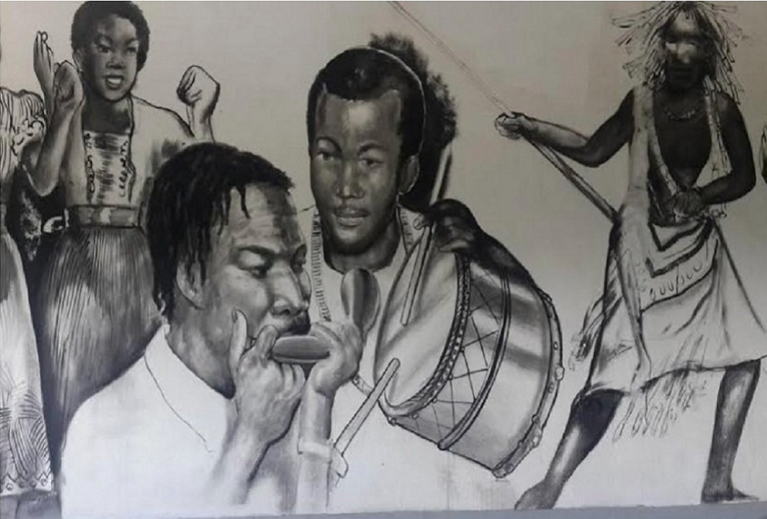
A report by Elizabeth Ofosuah Johnson for Face to Face Africa.
Our thanks to Peter Jordens for bringing this item to our attention.
Throughout the traditional and cultural history of Africa, the cow remains one of the most important animals. From being acknowledged as a symbol of strength and masculinity to a symbol of wealth, fertility and authority, the significance of the cow has been able to withstand colonization and westernisation in Africa.
Among the Akan, the largest ethnic group in Ghana with various subgroups including the Fanti, the cow horns are the most valuable, significant and important part of the cow used in the royal court for various traditional and cultural reasons.
The horn of the cow was presented as a token of respect to chiefs by warriors and hunters who travelled far to fight in wars or hunt for game. In general, horns of animals were of great significance including the tusk of elephants which were very rare and hard to get.

As an instrument, the cow horn became known as the Mmensuon which represents its plural form and the Aben in its singular form. Generally, the Mmensuon is the classification of all air-blown horn-like instruments.
In the Akan tradition, the cow horn was mainly used in the royal court as a voice imitation to relay messages that could not be spoken. Before the cow horn was used in the royal court, it was carefully washed, dried and put through a special ceremony to please the gods as it also served as a way of communicating with the spirits of the land and ancestors.
Several readings indicate that specific people were selected and trained to play the horns and they were referred to as Mmensuon performers. During special ceremonies, the performers played to welcome a chief and his entourage at an event, recount history and pass on information to the elders for the chief or the ancestors.

The Mmensuon was also used to communicate messages from the chief’s palace to the community or call a select group of people, usually family heads, council of elders or men for a sudden meeting.
Hunters used smaller cow horns to also communicate among each other in thick forests to either signal warning, danger or the capture of game by one hunter who needed help. It was also used as a warning sign of war and for communication among soldiers during the several wars with the British.
The Atlantic slave trade saw the capture of several Akans from their home into the Caribbean. To date, several people in the Caribbean especially in Jamaica trace their roots to West Africa especially the Akan of Ghana and parts of Ivory Coast.
The enslaved Africans took with them their tradition and cultures and the use of the cow horn is to date deeply vested in the culture of Jamaicans and Haitians. Enslaved Africans were not allowed to use the cow horn in their traditional ceremonies but the instrument, which later became known as the Abeng, became a significant symbol of freedom and heritage.
By the 17th century, the Maroon community, a community of escaped enslaved Africans had grown in Jamaica causing riots, rebellions and inspiring other enslaved Africans to fight for their freedom.
Among the Maroons, the Abeng became a tool for secret communication between each other during sudden attacks. It was also used to communicate at great distances and used to distract soldiers trying to capture them back into slavery.

During rebellions that were planned by brave enslaved Africans with the support of Maroons, the Abeng was used as a signal to strike throughout the plantations. Westerners and slave owners often raided communities to get rid of the Abengs that were used.
In recent times, the Abeng is used during festivals and social occasions to preserve their African heritage. It is played during weddings, funerals, birth ceremonies and during the celebration of great and legendary Maroons such as Queen Nanny, Takyi and several others.

The jamaican called it the abeng.
Africans called it the aben.
Hebrew called it the shofar.
Hence, the conclusion thefore, is that the only people who was commanded to use and originated the bulls horn were a special group of people in the bible called israelites.
Do you get it.
You figure it out.
LikeLike